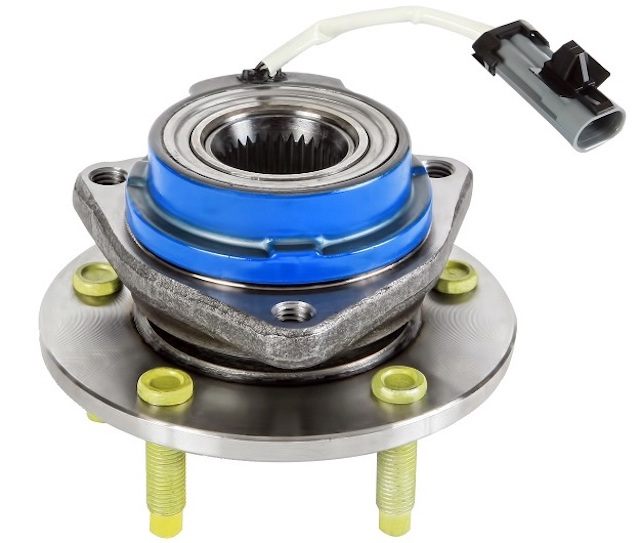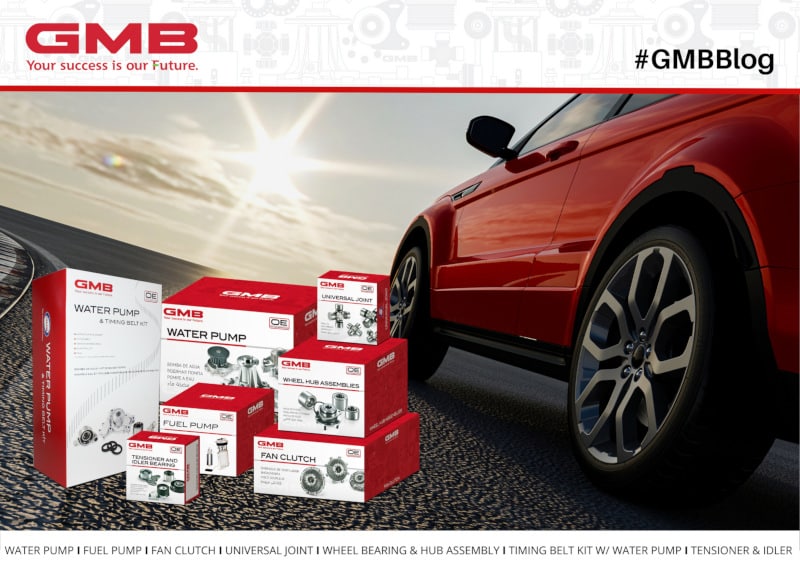Wheel Bearing Failure Modes and Troubleshooting
Wheel bearings are one of the most critical – and ignored – auto parts. Considering that a vehicle cannot roll without them (at least not very far), it’s a bit strange wheel bearings only get attention when they begin to fail. Perhaps the problem is that modern, single bearing systems are simple, reliable, and generally do not require maintenance.
Still, wheel bearings can and do fail. When wheel bearing failure is imminent, there are usually several indications. Here’s how you go about identifying a wheel bearing problem.
Abnormal Tire Wear

Copyright Goodluz
The least obvious sign of a wheel bearing problem is an abnormal tire wear pattern. Generally, it takes an astute observer to pay close attention to their tire’s tread wear pattern. Still, if you suspect a wheel bearing issue, it doesn’t hurt to study your tire tread.
Look for a single tire – or a pair of tires on the same axle – that are wearing abnormally. Assuming all your tires are inflated to the same pressure, they should all wear about the same. If a single tire is wearing fast or unevenly, it could be a sign of a problem. A pair of tires on the same axle that are wearing oddly can also be a sign of a wheel bearing issue.
Of course, there are other explanations for uneven tire wear:
- Incorrect tire inflation pressure
- Wheel alignment issues
- Inconsistent tire quality
If you spot an odd tread wear pattern on a single tire – or if two tires on the same axle are wearing differently – it’s a good idea to get your vehicle looked at by a professional.
Wobble, Shudder, or Shimmy
An odd wheel wobble, shudder, or shimmy usually coincides with an unusual tire wear pattern. When bearings are going bad, the wheels will be slightly off or wobbling a bit, especially at specific speeds or in specific driving situations where pressure on the bad wheel bearing is increased.
However, there are other possible issues for a wheel wobbly or shimmy. It could be that a wheel is unbalanced, and on some vehicles a wheel wobble is a symptom of a problem somewhere in the drivetrain (like a carrier bearing problem on a RWD or 4WD vehicle). If you’ve got a wheel that’s wobbling or shaking, it’s a good idea to get the vehicle checked out by a professional right way.
Grinding
 Photo credit: KnowYourParts.com
Photo credit: KnowYourParts.com
This is the most well known of the wheel bearing symptoms. If there is a grinding noise coming from the axle that’s heard only when the vehicle is in motion, it’s likely a bad bearing. Raising the vehicle and spinning the tires by hand should confirm the source of this grinding as well as which wheel it’s coming from.
Snap, Click, Pop
This symptom comes when the bearing is only grinding at certain angles. When the vehicle is turning, the wheel bearings are under a different kind of pressure than when the vehicle is traveling in a straight line. The pressure on the steer axle’s bearings, for example, is due to weight distribution and the changed angle of attack. The pressure on the rear axle’s bearings is due to the “wheel drag” or change in physics as the vehicle makes the turn, pulling the rear tires along with it.
The snaps, clicks, or pops will sound frequently during turns and only rarely during a straight-line drive.

Takeaway
If uneven tread wear or a shimmy or shudder is noticed, it’s a good idea to get your vehicle checked out by a professional. There are a few problems that can lead to these symptoms.
However, if you’ve got a vehicle with an odd tread pattern or shimmy – and one of our other failing wheel bearing symptoms (like grinding or popping), that’s a pretty clear indicator that you have a wheel bearing issue.
And when it’s time to replace a wheel bearing (or set of wheel bearings), be sure to check out GMB’s OEM quality wheel bearings and hubs. GMB is a global manufacturer of auto parts, including OEM parts for auto manufacturers all over the world.
MORE CONTENT
Stay current!
Sign up here to get the latest news
and updates on all things GMB.
Sign Up To Receive GMB News & Updates!

